
Vet Diagnostic Lab Recieves Top Network Status

Our CSU Veterinary Diagnostic Laboratory was awarded Level 1 status in the National Animal Health Laboratory Network. CONGRATULATIONS!
MIP Trainees Shine at CVMBS Research Day
2017 Golden Pipette Award:
For the department whose students earn the highest average presentation scores
Department of Microbiology, Immunology, and Pathology, victoriously accepted by Dr. Gregg Dean, Department Head
Basic Science – Oral Presentations:
2nd place: Claudia Rueckert, “Aedes aegypti may simultaneously transmit chikungunya, dengue, and Zika viruses.” Mentor: Dr. Greg Ebel
3rd place: Nunya Chotiwan, “Rapid and specific detection of Asian-lineage Zika virus.” Mentor: Dr. Rushika Perera
Basic Science – Poster Presentations:
1st place: Kevin Martin, “Busting biofilms: Free-living amoeba as a tool to combat biofilm-associated infections.” Mentor: Dr. Bradley Borlee
2nd place: Brooke Plumley, “Thermoregulation of biofilm formation in Burkholderia pseudomallei is disrupted by mutation of a putative diguanylate cyclase.” Mentor: Dr. Brad Borlee
3rd place: Kirsha Fredrickson, “Viral-mediated oncolysis of cancer cells isolated from canine tumors.” Mentor: Dr. Amy MacNeill
SP17 CMB/MCIN/BMB Poster Symposium Award Winners
James Curlin: Highest Honors, The Use of Humanized Mice to Study the Evolution of the SIV Sooty Mangabey Virus into HIV-2
Advisor: Ramesh Akkina
Annie Zhang Bargsten: Highest Honors, Degradation of a Toxic RNA involved in Type I Myotonic Dystrophy
Advisor: Carol Wilusz
Paige Charlins: High Honors, A Humanized Mouse Viral Outgrowth Assay with Increased Sensitvity in Detecting Latent HIV-1 from HIV-1 Positive Donors with Undetecable Virus
Advisor: Ramesh Akkina
Stephanie Morphet: High Honors, Mycobacterium Bovis Phenolic Mycobacterium Bovis Phenolic Glycolipid as a Biomaker of Bovine Tuberculosis
Advisor: John Belisle
Joseph Russo: Highest Honors-Post-doc, Poly (C) Binding Protein 2 Regulates MRNA Stability to Fine Tune Gene Expression During Stem Cell Differentiation
Article Featured In This Week In Virology
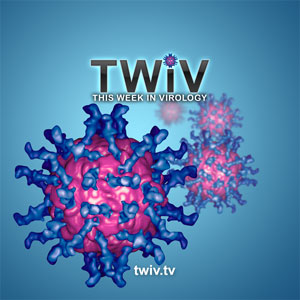
Not only was the recent mSphere article, “De Novo Generation of a Unique Cervid Prion Strain Using Protein Misfolding Cyclic Amplification”, co-authored by Mark Zabel featured as one of the Editor’s picks, it was also featured on This Week in Virology (TWIV) podcast. (The prion talk starts @ 11:25 minutes into the podcast).
Check it out here: http://www.microbe.tv/twiv/twiv-426/
New Diagnostic Bacteriologist Coming to the Dlab
We are pleased to announce that Dr. Josh Daniels from The Ohio State University will be moving west and will become the Dlab’s Diagnostic Bacteriologist starting July 1st.

Prion replication without host adaptation during interspecies transmissions
Jifeng Bian, Vadim Khaychuk, Rachel Angers, Natalia Fernandez-Borges, Enric Vidal, Crystal Meyerett-Reid, Sehun Kim, Carla Calvi, Jason Bartz, Ed Hoover, Umberto Agrimi, Jurgen Richt, Joaquin Castilla and Glenn Telling
PNAS 114: 1141-1146 January 31, 2017
NAPA know how, nnnnnnNAPA know how? That’s precisely what the prion field now wants to know…….
The prion world was once a pretty darn straightforward field before this month’s MIPub of the month came along. A host protein, PrpC, misfolds into a pathogenic ‘prion’ form called PrpSC. The pathogenic form induces other normal PrpC proteins to misfold, causing highly protease resistant protein aggregates to form. This lead to neurological problems in the form of spongiform encephalopathies. Eat the brain of an infected cow or infected person (but don’t eat a clown’s brain, we hear they taste funny), and the prions can induce disease in the brain of the diner. Simple right?
Then folks started studying interspecies transmission of prions, a much less efficient process. It often took multiple passages for the prion to adapt to the new host and effectively and consistently cause disease. Since not all Prp proteins are created equal (i.e. there are amino acids differences among the Prp protein in different animals), this inefficiency made sense. All was quiet on the prion front. Then Jifeng and the rest of the Telling gang at the Prion Research Center started ‘horsing’ around….
They made transgenic mice with a horse Prp gene (TgEq) and infected them with scrapie prions (SSBP1 or RML1). Low and behold (and not too surprising), one-third of the TgEq animals got sick. However when they tried passaging the prions to more TgEq mice, nothing happened. Zero. Nilch. Nada. They reproduced the same phenomenon in a test tube using their Protein Misfolding Cyclic Amplification system – they were able to make prions using SSBP1 scrapie and equine Prpc, but the new prions just weren’t infectious to TgEq mice. The phenomenon was also generalizable to deer Prpc and mink prions. Jifeng et al called this interspecies generation of prions that were not infectious “Non-Adaptive Prion Amplification’ or NAPA.So why did we choose this paper as out coveted MIPub of the Month ®? First, this clear documentation of accumulation of prions in brains that could not efficiently induce disease in other animals reveals vital information about prion pathogenesis. It may, for example, very much explain why the observed frequency of mad cow disease in humans was much less than what was expected. Epidemiologically speaking, that’s pretty darn important. Second, prions are just plain cool. Not as cool as RNA mind you, but still pretty chill. Finally, we like to coin a new phrase to explain the NAPA phenomenon to the masses: Prions become ‘Prioffs’……..
 MIP Publications February 2017
MIP Publications February 2017
Rout ED, Shank AM, Waite AH, Siegel A, Avery AC, Avery PR. Progression of cutaneous plasmacytoma to plasma cell leukemia in a dog. Vet Clin Pathol. 2017 Feb 10. doi: 10.1111/vcp.12463.
Halsey CH, Thamm DH, Weishaar KM, Burton JH, Charles JB, Gustafson DL, Avery AC, Ehrhart EJ. Expression of Phosphorylated KIT in Canine Mast Cell Tumor. Vet Pathol. 2017 Jan 1:300985816688943. doi: 10.1177/0300985816688943.
Rout ED, Avery PR. Lymphoid Neoplasia: Correlations Between Morphology and Flow Cytometry. Vet Clin North Am Small Anim Pract. 2017 Jan;47(1):53-70. doi: 10.1016/j.cvsm.2016.07.004.
Podell BK, Ackart DF, Richardson MA, DiLisio JE, Pulford B, Basaraba RJ. A model of type 2 diabetes in the guinea pig using sequential diet-induced glucose intolerance and streptozotocin treatment. Dis Model Mech. 2017 Feb 1;10(2):151-162. doi: 10.1242/dmm.025593.
Duggal NK, Ritter JM, Pestorius SE, Zaki SR, Davis BS, Chang GJ, Bowen RA, Brault AC. Frequent Zika Virus Sexual Transmission and Prolonged Viral RNA Shedding in an Immunodeficient Mouse Model. Cell Rep. 2017 Feb 14;18(7):1751-1760. doi: 10.1016/j.celrep.2017.01.056.
Ragan IK, Blizzard EL, Gordy P, Bowen RA. Investigating the Potential Role of North American Animals as Hosts for Zika Virus. Vector Borne Zoonotic Dis. 2017 Feb 1. doi: 10.1089/vbz.2016.2099.
Calisher CH. Following the Yellow Brick Road. Annu Rev Entomol. 2017 Jan 31;62:1-13. doi: 10.1146/annurev-ento-031616-034951.
Martin KW, Olsen AM, Duncan CG, Duerr FM. The method of attachment influences accelerometer-based activity data in dogs. BMC Vet Res. 2017 Feb 10;13(1):48. doi: 10.1186/s12917-017-0971-1.
Hoover CE, Davenport KA, Henderson DM, Zabel MD, Hoover EA. Endogenous brain lipids inhibit prion amyloid formation in vitro. J Virol. 2017 Feb 15. pii: JVI.02162-16. doi: 10.1128/JVI.02162-16.
Bian J, Khaychuk V, Angers RC, Fernández-Borges N, Vidal E, Meyerett-Reid C, Kim S, Calvi CL, Bartz JC, Hoover EA, Agrimi U, Richt JA, Castilla J, Telling GC. Prion replication without host adaptation during interspecies transmissions. Proc Natl Acad Sci U S A. 2017 Jan 31;114(5):1141-1146. doi: 10.1073/pnas.1611891114.
Villela AD, Pham H, Jones V, Grzegorzewicz AE, Rodrigues-Junior VD, Campos MM, Basso LA, Jackson M, Santos DS. Analysis of uracil phosphoribosyltransferase expression in Mycobacterium tuberculosis and evaluation of upp knockout strain in infected mice. FEMS Microbiol Lett. 2017 Jan 26. pii: fnx023. doi: 10.1093/femsle/fnx023.
Li W, Sanchez-Hidalgo A, Jones V, Calado Nogueira de Moura V, North EJ, Jackson M. Synergistic interactions of MmpL3 inhibitors with antitubercular compounds in vitro. Antimicrob Agents Chemother. 2017 Jan 23. pii: AAC.02399-16. doi: 10.1128/AAC.02399-16.
Golnar AJ, Kading RC, Hamer GL. Quantifying the potential pathways and locations of Rift Valley fever virus entry into the United States. Transbound Emerg Dis. 2017 Feb 12. doi: 10.1111/tbed.12608.
Radakovich LB, Pannone SC, Truelove MP, Olver CS, Santangelo KS. Hematology and biochemistry of aging-evidence of "anemia of the elderly" in old dogs. Vet Clin Pathol. 2017 Feb 13. doi: 10.1111/vcp.12459.
Reimschuessel R, Grabenstein M, Guag J, Nemser SM, Song K, Qiu J, Clothier KA, Byrne BA, Marks SL, Cadmus K, Pabilonia K, Sanchez S, Rajeev S, Ensley S, Frana TS, Jergens AE, Chappell KH, Thakur S, Byrum B, Cui J, Zhang Y, Erdman MM, Rankin SC, Daly R, Das S, Ruesch L, Lawhon SD, Zhang S, Baszler T, Diaz-Campos D, Hartmann F, Okwumabua O. Multi-Laboratory survey to evaluate Salmonella prevalence in diarrheic and non-diarrheic dogs and cats-in the USA between 2012 and 2014. J Clin Microbiol. 2017 Feb 15. pii: JCM.02137-16. doi: 10.1128/JCM.02137-16.
Malmberg JL, Howerth EW, Powers BE, Schaffer PA. Acanthomatous ameloblastoma with atypical foci in five dogs. J Vet Diagn Invest. 2017 Jan 1:1040638716682565. doi: 10.1177/1040638716682565.
Neckles CM, Eltschkner S, Cummings JE, Hirschbeck M, Daryaee F, Bommineni GR, Zhang Z, Spagnuolo LA, Yu W, Davoodi S, Slayden RA, Kisker C, Tonge PJ. Rational Optimization of Diphenyl Ether Binding Kinetics to the Enoyl-ACP Reductase FabI1 from Burkholderia pseudomallei. Biochemistry. 2017 Feb 22. doi: 10.1021/acs.biochem.6b01048.
Spagnuolo LA, Eltschkner S, Yu W, Daryaee F, Davoodi S, Knudson SE, Allen EK, Merino J, Pschibul A, Moree B, Thivalapill N, Truglio JJ, Salafsky J, Slayden RA, Kisker C, Tonge PJ. Evaluating the Contribution of Transition-State Destabilization to Changes in the Residence Time of Triazole-Based InhA Inhibitors. J Am Chem Soc. 2017 Feb 22. doi: 10.1021/jacs.6b11148.
Frade MA, de Paula NA, Gomes CM, Vernal S, Bernardes Filho F, Lugão HB, de Abreu MM, Botini P, Duthie MS, Spencer JS, Soares RC, Foss NT. Unexpectedly high leprosy seroprevalence detected using a random surveillance strategy in midwestern Brazil: A comparison of ELISA and a rapid diagnostic test. PLoS Negl Trop Dis. 2017 Feb 23;11(2):e0005375. doi: 10.1371/journal.pntd.0005375.
Meyerett-Reid C, Wyckoff AC, Spraker T, Pulford B, Bender H, Zabel MD. De Novo Generation of a Unique Cervid Prion Strain Using Protein Misfolding Cyclic Amplification. mSphere. 2017 Jan 25;2(1). pii: e00372-16. doi: 10.1128/mSphere.00372-16.
Moreno JA, Telling GC. Molecular Mechanisms of Chronic Wasting Disease Prion Propagation. Cold Spring Harb Perspect Med. 2017 Feb 13. pii: a024448. doi: 10.1101/cshperspect.a024448.
Russo J, Heck AM, Wilusz J, Wilusz CJ. Metabolic Labeling and Recovery of Nascent RNA to Accurately Quantify mRNA Stability. Methods. 2017 Feb 17. pii: S1046-2023(16)30364-4. doi: 10.1016/j.ymeth.2017.02.003.
Russo J, Lee JE, López CM, Anderson J, Nguyen TP, Heck AM, Wilusz J, Wilusz CJ. The CELF1 RNA-Binding Protein Regulates Decay of Signal Recognition Particle mRNAs and Limits Secretion in Mouse Myoblasts. PLoS One. 2017 Jan 27;12(1):e0170680. doi: 10.1371/journal.pone.0170680.

Graduate Recruits Treated to a Weekend of the Two Things NoCo is Famous for: Snow and Brews
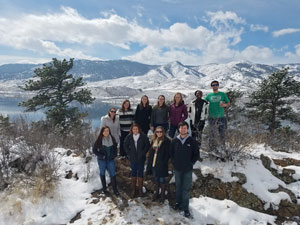
Fifteen prospective MIP graduate students visited the CSU campus in February; five candidates visited on Monday, Feb 20th, and ten visited on Friday, Feb 24th. Both groups were given an overview of the Graduate program from Dr. Zabel, received tours of the Foothills facilities, met with the GEC, and met with individual faculty whose research programs were of interest to them. The students who visited on the 24th also enjoyed a FAC with faculty and students at the Blind Pig organized by the MIP Graduate Student Organization (MIP-GSO). The MIP-GSO also organized a ‘Inside the Homes of MIP Graduate Students’ tour, followed by a brewery tour and lunch at Fort Collins Brewery.
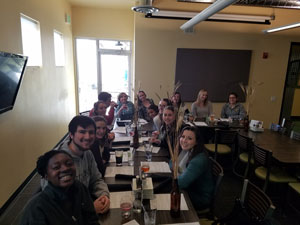
Going with the ‘Flow’: Orme Lab Visits India for a US-Indo Workshop of Flow Cytometry and Metabolomics

How many of the ‘Wonders of World’ can you find in this photo?
See more photos here.
Micro Journal Club
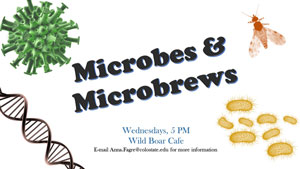
Micro Journal Club will now be meeting on Wednesdays at 5PM at the Wild Boar.
Rocky Mountain ASM Meeting
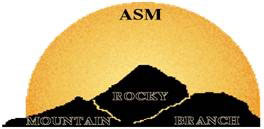
Rocky Mountain Branch
of the American Society for Microbiology
Spring meeting
Saturday, April 15th, 2017
AlloSource
Centennial, Colorado
Free Meeting registration to all students.
Free lunch to all pre-registered meeting attendees.
Student & Postdoc Travel Awards available
$$$ Awards for top student & postdoc presentations $$$
Keynote Presentation
“Microbes in Space”
Dr. Kasthuri Venkateswaran
California Institute of Technology, Jet Propulsion Laboratory
Biotechnology and Planetary Protection Group
See meeting annoucement and registration here.
Return registration form to: adela.cotagomez@ucdenver
Deadline: April 5th, 2017.
Employee Intranet

Don't forget to check out our Employee Intranet! You can find important, electronic forms and infromation about what's happening in the department. Click here to see what's new!
Deadline: March 20th at 5PM
Attention MIP Faculty: Don’t forget to review the FY17 CRC Call for Proposals and take full advantage of this internal funding competition designed to provide seed money for future external grant proposals.
John Spencer: Scientist, Video Star
Leprosy Surveillance Videos
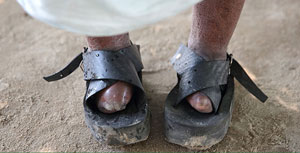
Check out these two videos about Claudio Salgado and John Spencer's leprosy surveillance work in the Pará state of the Amazon region of Brazil.
Check out the video one and video two.
Plumley et al picture from the Borlee Lab Featured as Cover Art on the Journal of Bacteriology
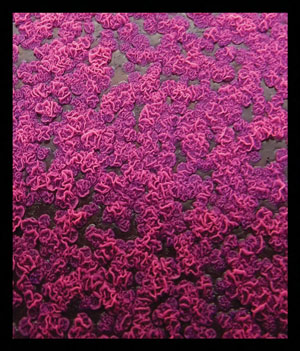
Need some proof that science hasn’t lost it’s romance? Check out the cover of the 'Valentine’s Day’ edition of J. Bact. compliments of the Borlee lab.
Microbiology Majors Channel some ‘Live and Let Dye’ attitude
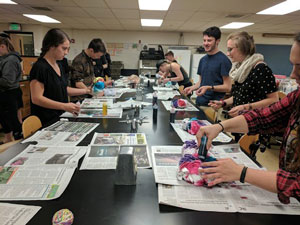
The Microbiology Student Association recently held a team-building tie-dye event. Check out more photos here.
The Apple Doesn’t Fall Far from the Tree……
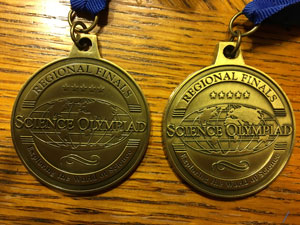
Congratulations to Preston Middle Schoolers Gwen Wilusz and her partner Avery for coming in first place in the Northern Colorado Regional Finals of the Microbe Mission and Disease Detective competitions of the Science Olympiad.
MIP Students share their expertise at Science Olympiad
Fossil Ridge High School teams coached in microbiology by MIP graduate students Bridget Eklund, Megan Miller, Shaun Cross and Reyes Murrieta performed impressively at the Regional Science Olympiad Tournament this weekend. FRHS teams swept the Microbe Mission event placing 1st, 2nd and 3rd and did nearly as well in Disease Detectives placing 2nd, 3rd and 4th. Twenty-nine teams from all over Northern Colorado participated. The winning teams will be going to the State Tournament at Colorado School of Mines on April 15 where they hope to qualify for Nationals in Dayton, OH. Volunteers are always needed to help judge and run these events - Stephanie Morphet in the Belisle Lab was a supervisor for the Forensics Event at this weekend’s competition. The National Finals will be held here at CSU in 2018 so there will be many opportunities! Contact steven.lovaas@colostate.edu if you are interested in helping out this year or next.
Off The Beaten Pathologist
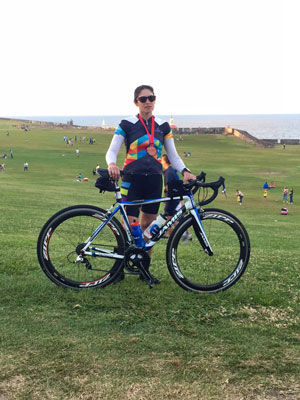
Carmen Ledesma Feliciano recently rode her bicycle all around her home island of Puerto Rico. That’s 375 miles in 3 days! Rumor has it that her next challenge is to get a pile of manuscripts submitted!

The Basaraba lab has some exciting news to share with you! Two of their members, Alexandra Todd and Jessie Haugen, are taking their passion for science mainstream and have established an athletic apparel brand that incorporates science with fashion. Their creation of CureGear began with the idea to print immunofluorescent images of cells onto leggings for themselves, but has developed into an even greater mission with an emphasis to support research. By designing and selling leggings with immunofluorescent images, their goal is to inspire interest and curiosity for infectious disease research while raising awareness for under-acknowledged diseases, with an emphasis on Tuberculosis. Additionally, they plan to donate 50% of the profits generated to infectious disease research. They will launch this endeavor on Kickstarter (a crowdfunding startup website) on March 24th, World TB Day. The success of this startup company depends on the excitement and passion generated from people like those in our department, so head over to their website, curegear.com, and follow their journey on their social media pages (Facebook, Instagram, Twitter, and Pinterest)! They really appreciate all of your support!"
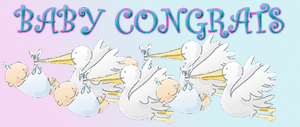
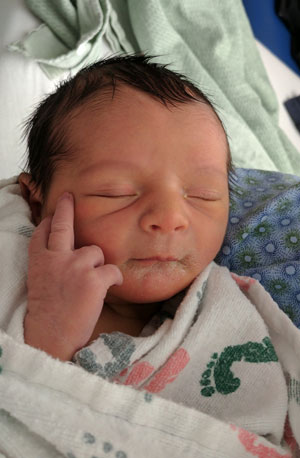
Caitlyn Romero Martinez and her husband welcomed their baby boy, Ira James Martinez on March 5th, 2017. Mom and baby are both doing well. Congratulations!

"A goal is a dream with a deadline."
-Napoleon Hill
Choose your Caption

Marcela took some time to visit the Taj Mahal during the recent Indo-US Workshop in India
Alternative Captions:
1. Marcela tries a new approach to getting a fundable grant score from NIH
2. Much like many Fort Collins homes these days, there ain’t a prayer she can afford this house
3. After years of hearing Ian preach, Marcela displays a common phenotype

Brian Foy works on a lecture during the recent ‘phenol incident’ in the Microbiology Building
Alternative Captions:
1. Neither rain, nor snow, nor nasty organic smells will stop an MIP faculty member from completing their assigned tasks
2. A sure sign that its NCAA basketball tournament time…
3. Hope Brian doesn’t transmit that computer virus to anyone…..

![]() The new rules and regulations regarding Zika virus R21 Grants
The new rules and regulations regarding Zika virus R21 Grants
While NIH is still very interested in encouraging Zika virus grant applications, the new FOA that was recently issued has three key changes. First, rolling submission is over and standard submission dates are now in effect. Second, Zika applications will be reviewed by standard study sections rather than the Special Emphasis Panels that were recruited in the past. For more info, check out https://grants.nih.gov/grants/guide/pa-files/PA-17-085.html
![]() K22 Career Transition Award Eligibility
K22 Career Transition Award Eligibility
K22 grant awards from NIAID require that applicants have no more than five years of postdoctoral research experience at the time of submission. Time spent on parental leave, other well-justified leave, and clinical training do not count against the research training limit.
![]() F31 predoctoral diversity grants – change in submission dates
F31 predoctoral diversity grants – change in submission dates
Please note that F31 diversity predoctoral fellowship grant applications should now be submitted on the standard fellowship due dates: April 8, August 8, and December 8 for non-AIDS applications.
![]() NIAID: DON’T use the term ‘Co-PI’ on your grant application
NIAID: DON’T use the term ‘Co-PI’ on your grant application
NIH doesn't recognize Co-PI as a formal role in a grant project. Thus calling someone a co-PI on your project causes confusion since it’s unclear whether you mean PI on a multiple-PI award or co-investigator. And that confusion could affect your application; some FOAs have eligibility or level of effort requirements that affect only PIs. Also note that assigning someone the role of "Co-PD/PI" will not identify the application as a multiple PD/PI application. The bottom line: while it’s true that the term co-PI is one of the options listed on the SF 424 grant forms and other agencies recognize that role, NIAID does not.
New Grant Awards
John Belisle, "BMAC CSU Core Facility Mass Spectrometry Services," HHS-CDC-Centers for Disease Control.
Bill Black, Isolation, Characterization and Transformation of Natural Endosymbiotic Bacteria from Aedes aegypti for Paratransgenesis to Establish Refractoriness t," Little Fly Labs, Ltd.
Brad Borlee, "Increasing treatment efficacy in antibiotic-tolerant Pseudomonas aeruginosa," Boettcher Foundation.
Greg Ebel, "Quasispecies Dynamics in Arbovirus Persistence Emergence and Fitness," HHS-NIH-NIAID-Allergy and Infect Diseases. "Role of Cell Tropism for Zika Virus Transmission and Pathogenesis, HHS-NIH-NIAID-Allergy and Infect Diseases.
Ed Hoover, "PMCA Detection of CWD Infection in Cervid and Non-Cervid Species," HHS-NIH-Neurological Disorders and Stroke.
Angelo Izzo, "Assessment of SigH Vaccine in Guinea Pigs," Aeras.
Mary Jackson, "Mechanisms of Susceptibility and Resistance of Mycobacterium Tuberculosis to Isoxyl and Thiacetazone," HHS-NIH-National Institutes of Health.
Rebekah Kading, "Virus-Vector Studies with V920, Recombinant Vesicular Stomatitis-Zaire Ebolavirus (rVSV-ZEBOV) Vaccine," BioProtection Systems, Corp. "Competence of North American Arthropod Vectors for High Consequence or Transboundary Foreign Animal Diseases," Texas A and M University.
Anne Lenaerts, "TB Drug Accelerator: TB Mouse in vivo Models," Bill and Melinda Gates Foundation .
Diane Ordway, " MAT2501 (Encochleated Amikacin) for the Treatment of NTM (M. avium, M. abscessus," Matinas BioPharma Holdings, Inc..
Ian Orme, "Novel Vaccine Boosting Candidates for Tuberculosis," HHS-NIH-NIAID-Allergy and Infect Diseases.
Joel Rovnak, "Design and Validation of a Rapid Assay for Zika Virus in Biofluids and Insect Vectors," HHS-NIH-NIAID-Allergy and Infect Diseases.
Jeff Wilusz, "Pathological Implications of Repression of Cellular RNA Decay by Zika Virus," HHS-NIH-NIAID-Allergy and Infect Diseases. "Post-Transcriptional RNA Regulons in Stem Cells," HHS-NIH-NIAID-Allergy and Infect Diseases.
| Mon | Tue | Wed | Thur | Fri |
|
|
1
|
2 |
3 |
| 6
|
7 | 8
|
9
|
10
|
| 13
Spring Break |
14
Spring Break |
15
Spring Break |
16
Spring Break |
17
St. Patrick's Day |
| 20
Classes Resume |
21 | 22 | 23 | 24
|
| 27
|
28 | 29 | 30 |
31 |
Do you have NEWS or PICTURES you would like to share?
Send In your ideas or newsworthy items. Contributions make the Newsletter better!
